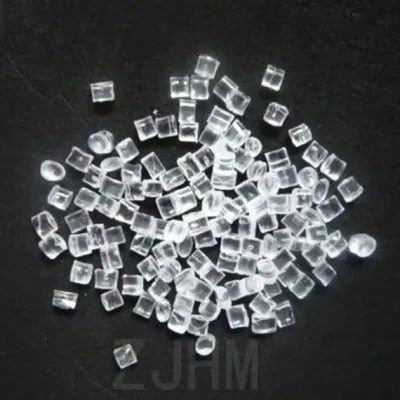-
Categories
-
Pharmaceutical Intermediates
-
Active Pharmaceutical Ingredients
-
Food Additives
- Industrial Coatings
- Agrochemicals
- Dyes and Pigments
- Surfactant
- Flavors and Fragrances
- Chemical Reagents
- Catalyst and Auxiliary
- Natural Products
- Inorganic Chemistry
-
Organic Chemistry
-
Biochemical Engineering
- Analytical Chemistry
-
Cosmetic Ingredient
- Water Treatment Chemical
-
Pharmaceutical Intermediates
Promotion
ECHEMI Mall
Wholesale
Weekly Price
Exhibition
News
-
Trade Service
Under the energy revolution, the power grid will become a large-scale new energy power transmission and distribution network
.
The power grid is organically integrated with distributed power sources, energy storage devices, and comprehensive and efficient energy utilization systems to become a flexible and efficient intelligent energy network
.
At the same time, the smart grid will also have extremely high power supply reliability or functional reliability, basically eliminating the risk of
large-scale power outages.
Especially with the extensive integration of power grid and information communication system, a new service system of energy, electricity and information integration will be further built, so that the smart grid can undertake a new mission and play a greater role
.
China will vigorously promote the four major revolutions of energy consumption, supply, technology and system, as well as the strategy
of strengthening international cooperation in all aspects and long-term development.
The Chinese government has solemnly pledged to peak carbon dioxide emissions around 2030
.
Therefore, the establishment of a new generation of energy system in China is an important measure
to implement the energy revolution, ensure energy security, cope with global climate change and achieve the important tasks of the government.
Vigorously promote the four major revolutions of energy consumption, supply, technology and system, which are determined by China's
energy and electricity situation.
China's national economy and energy and power development are facing a grim situation
.
In 2014, China's carbon emissions accounted for 29% of the world's total carbon emissions, ranking first in the world, and the smog caused by fossil fuel pollution is also very serious, and the large-scale and high-proportion development and utilization of renewable energy is imminent
.
By the end of 2014, China's grid-connected installed capacity of wind power and solar power reached 120 million kilowatts, accounting for about 3.
2%
of the total power generation.
The proportion is small, and it is still difficult to take on major responsibilities
.
At the same time, China's overall energy efficiency is low, and the comprehensive energy efficiency is less than 40%.
Therefore, we urgently need to greatly improve the comprehensive energy utilization efficiency to reduce the total
energy consumption.
In addition, the grid can withstand volatility and its ability to absorb renewable energy is limited
.
In 2014, the national average curtailment rate was 8%, and there were different degrees of wind curtailment in the three northern regions, and there was still no cost-effective solution to the problem of large-scale and high-proportion wind power, photovoltaic and other renewable energy consumption, which required the search for new comprehensive energy solutions
.
The new generation of energy system is a networked physical system
with electricity as the center and the power grid as the backbone of various primary and secondary energy production, transmission, use, storage and conversion devices, as well as their information, communication, control and protection devices directly or indirectly connected.
The goal of building a next-generation energy system is to maximize the development and utilization of renewable energy and maximize the comprehensive energy utilization efficiency
.
The new generation of energy system is the extension
of the third generation power grid to the integrated energy system under the new situation.
Compared with the traditional energy system, the new generation of energy system has four main characteristics: first, it realizes a diversified energy structure that prioritizes renewable energy and adapts to local conditions; The second is to realize a reliable energy production and supply mode that is centralized and distributed, and coordinated with each other; The third is to realize the comprehensive utilization of various types of energy, as well as the interaction between supply and demand, saving and efficient energy use; Fourth, it is oriented to the whole society, with platform, commercial and service
.
However, the establishment of a new generation of energy system with electricity as the center and the power grid as the backbone needs to overcome China's long-standing systemic shortcomings such as separate energy plans, segmentation, and lack of effective energy market allocation, which requires reallocation of resources with the help of
energy reform.
The new generation of energy systems also needs to be supported
by science and engineering technologies including source, receiver and transmission.
The source end, especially in the western part of China, needs system science, energy conversion storage and comprehensive utilization science and related engineering science and technology
in the entire chain of large-scale renewable energy production, storage, conversion and consumption.
At the receiving end, the production, storage and demand consumption of various distributed energy resources are closely integrated with the power grid to achieve system science and related engineering science and technology
in the efficient, complementary and comprehensive utilization chain.
Transmission, new transmission and energy transmission methods with the power grid as the main backbone, as well as system science of network construction and engineering science and technology
of new transmission and energy transmission methods.
In the west, the plan of west-to-east power transmission is proposed to realize the coordination between wind power, solar energy, hydropower and other renewable energy sources in the west, as well as complement and cooperate with each other, and at the same time, it can also improve the utilization rate and stability
of east-east power transmission.
This requires relying on the power grid to solve the large-scale transmission of wind power, solar energy and hydropower in the west, but there are still certain difficulties
in this large-scale transmission.
Therefore, it is necessary to establish a comprehensive energy system at the source, convert wind and light into hydrogen and natural gas, cooperate the power grid with the gas pipeline network, realize energy scale conversion and storage, and better use renewable energy
such as wind and solar energy.
Converting wind and solar energy into other forms of energy is also a good way to
store energy.
Similar energy conversion and energy storage projects are being implemented at the source, such as the integrated system of wind power, coal power and electrolytic aluminum being carried out in Inner Mongolia, and the integrated system of wind power, photovoltaic, energy storage, heat storage and power supply being done in Qinghai and other places, which can comprehensively solve the problems
of insufficient energy utilization.
At the receiving end, it is necessary to build a comprehensive energy system, and coordinate, cooperate and optimize the different energy supply systems at the receiving end as a whole, which is the only way
to achieve the best energy efficiency in society, promote the large-scale utilization of renewable energy, and achieve sustainable energy development.
Develop a regional integrated energy supply system, carry out unified planning and design, coordinate and optimize the operation of the power supply, gas supply and heating/cooling systems at the receiving end, improve the comprehensive utilization efficiency of energy, and ensure the safety and self-healing ability of the energy supply system
.
Under the energy revolution, the power grid will become a large-scale new energy power transmission and distribution network
.
The power grid is organically integrated with distributed power sources, energy storage devices, and comprehensive and efficient energy utilization systems to become a flexible and efficient intelligent energy network
.
At the same time, the smart grid will also have extremely high power supply reliability or functional reliability, basically eliminating the risk of
large-scale power outages.
Especially with the extensive integration of power grid and information communication system, a new service system of energy, electricity and information integration will be further built, so that the smart grid can undertake a new mission and play a greater role
.
China will vigorously promote the four major revolutions of energy consumption, supply, technology and system, as well as the strategy
of strengthening international cooperation in all aspects and long-term development.
The Chinese government has solemnly pledged to peak carbon dioxide emissions around 2030
.
Therefore, the establishment of a new generation of energy system in China is an important measure
to implement the energy revolution, ensure energy security, cope with global climate change and achieve the important tasks of the government.
Vigorously promote the four major revolutions of energy consumption, supply, technology and system, which are determined by China's
energy and electricity situation.
China's national economy and energy and power development are facing a grim situation
.
In 2014, China's carbon emissions accounted for 29% of the world's total carbon emissions, ranking first in the world, and the smog caused by fossil fuel pollution is also very serious, and the large-scale and high-proportion development and utilization of renewable energy is imminent
.
By the end of 2014, China's grid-connected installed capacity of wind power and solar power reached 120 million kilowatts, accounting for about 3.
2%
of the total power generation.
The proportion is small, and it is still difficult to take on major responsibilities
.
At the same time, China's overall energy efficiency is low, and the comprehensive energy efficiency is less than 40%.
Therefore, we urgently need to greatly improve the comprehensive energy utilization efficiency to reduce the total
energy consumption.
In addition, the grid can withstand volatility and its ability to absorb renewable energy is limited
.
In 2014, the national average curtailment rate was 8%, and there were different degrees of wind curtailment in the three northern regions, and there was still no cost-effective solution to the problem of large-scale and high-proportion wind power, photovoltaic and other renewable energy consumption, which required the search for new comprehensive energy solutions
.
The new generation of energy system is a networked physical system
with electricity as the center and the power grid as the backbone of various primary and secondary energy production, transmission, use, storage and conversion devices, as well as their information, communication, control and protection devices directly or indirectly connected.
The goal of building a next-generation energy system is to maximize the development and utilization of renewable energy and maximize the comprehensive energy utilization efficiency
.
The new generation of energy system is the extension
of the third generation power grid to the integrated energy system under the new situation.
Compared with the traditional energy system, the new generation of energy system has four main characteristics: first, it realizes a diversified energy structure that prioritizes renewable energy and adapts to local conditions; The second is to realize a reliable energy production and supply mode that is centralized and distributed, and coordinated with each other; The third is to realize the comprehensive utilization of various types of energy, as well as the interaction between supply and demand, saving and efficient energy use; Fourth, it is oriented to the whole society, with platform, commercial and service
.
However, the establishment of a new generation of energy system with electricity as the center and the power grid as the backbone needs to overcome China's long-standing systemic shortcomings such as separate energy plans, segmentation, and lack of effective energy market allocation, which requires reallocation of resources with the help of
energy reform.
The new generation of energy systems also needs to be supported
by science and engineering technologies including source, receiver and transmission.
The source end, especially in the western part of China, needs system science, energy conversion storage and comprehensive utilization science and related engineering science and technology
in the entire chain of large-scale renewable energy production, storage, conversion and consumption.
At the receiving end, the production, storage and demand consumption of various distributed energy resources are closely integrated with the power grid to achieve system science and related engineering science and technology
in the efficient, complementary and comprehensive utilization chain.
Transmission, new transmission and energy transmission methods with the power grid as the main backbone, as well as system science of network construction and engineering science and technology
of new transmission and energy transmission methods.
In the west, the plan of west-to-east power transmission is proposed to realize the coordination between wind power, solar energy, hydropower and other renewable energy sources in the west, as well as complement and cooperate with each other, and at the same time, it can also improve the utilization rate and stability
of east-east power transmission.
This requires relying on the power grid to solve the large-scale transmission of wind power, solar energy and hydropower in the west, but there are still certain difficulties
in this large-scale transmission.
Therefore, it is necessary to establish a comprehensive energy system at the source, convert wind and light into hydrogen and natural gas, cooperate the power grid with the gas pipeline network, realize energy scale conversion and storage, and better use renewable energy
such as wind and solar energy.
Converting wind and solar energy into other forms of energy is also a good way to
store energy.
Similar energy conversion and energy storage projects are being implemented at the source, such as the integrated system of wind power, coal power and electrolytic aluminum being carried out in Inner Mongolia, and the integrated system of wind power, photovoltaic, energy storage, heat storage and power supply being done in Qinghai and other places, which can comprehensively solve the problems
of insufficient energy utilization.
At the receiving end, it is necessary to build a comprehensive energy system, and coordinate, cooperate and optimize the different energy supply systems at the receiving end as a whole, which is the only way
to achieve the best energy efficiency in society, promote the large-scale utilization of renewable energy, and achieve sustainable energy development.
Develop a regional integrated energy supply system, carry out unified planning and design, coordinate and optimize the operation of the power supply, gas supply and heating/cooling systems at the receiving end, improve the comprehensive utilization efficiency of energy, and ensure the safety and self-healing ability of the energy supply system
.







